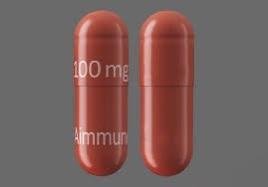Palforzia and Alcohol/Food Interactions
There is 1 alcohol/food/lifestyle interaction with Palforzia (peanut allergen powder).
Peanut Allergen Extract Food/Lifestyle
Major Food Interaction
Consumption of alcoholic beverages or products containing alcohol within 2 hours of taking peanut allergen extract may increase the risk and severity of allergic reactions that can sometimes occur during treatment with peanut allergen extract. Do not use alcohol two hours before, or two hours after the dosing time of peanut allergen extract. Potentially life-threatening or fatal reactions may occur. Talk to your doctor if you have any questions or concerns. You should also take peanut allergen extract with a meal, preferably in the evening, and do not take peanut allergen extract within 2 hours of bedtime. Stop using peanut allergen extract, administer epinephrine, and seek immediate medical attention if signs and symptoms of an allergic reaction develop such as trouble breathing, swallowing, or speaking; throat tightness or swelling; dizziness, lightheadedness, or fainting; rapid or weak heartbeat; severe stomach cramps or pain; vomiting or diarrhea; and/or severe flushing or itching. It is important to tell your doctor about all other medications you use, including vitamins and herbs. Do not stop using any medications without first talking to your doctor.
Switch to professional interaction data
Palforzia drug interactions
There are 139 drug interactions with Palforzia (peanut allergen powder).
Palforzia disease interactions
There are 3 disease interactions with Palforzia (peanut allergen powder) which include:
More about Palforzia (peanut allergen powder)
- Palforzia consumer information
- Check interactions
- Compare alternatives
- Drug images
- Side effects
- Dosage information
- During pregnancy
- FDA approval history
- Drug class: allergenics
- En español
Related treatment guides
Drug Interaction Classification
| Highly clinically significant. Avoid combinations; the risk of the interaction outweighs the benefit. | |
| Moderately clinically significant. Usually avoid combinations; use it only under special circumstances. | |
| Minimally clinically significant. Minimize risk; assess risk and consider an alternative drug, take steps to circumvent the interaction risk and/or institute a monitoring plan. | |
| No interaction information available. |
See also:
Further information
Always consult your healthcare provider to ensure the information displayed on this page applies to your personal circumstances.


